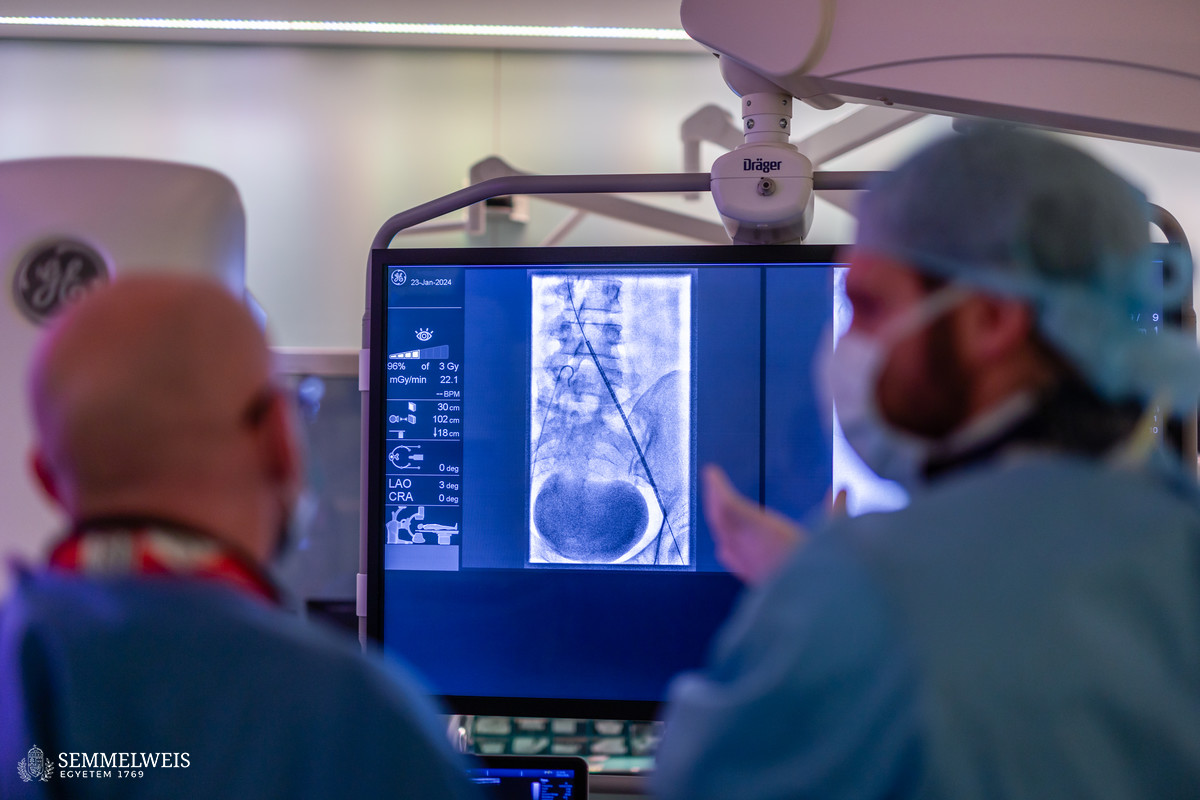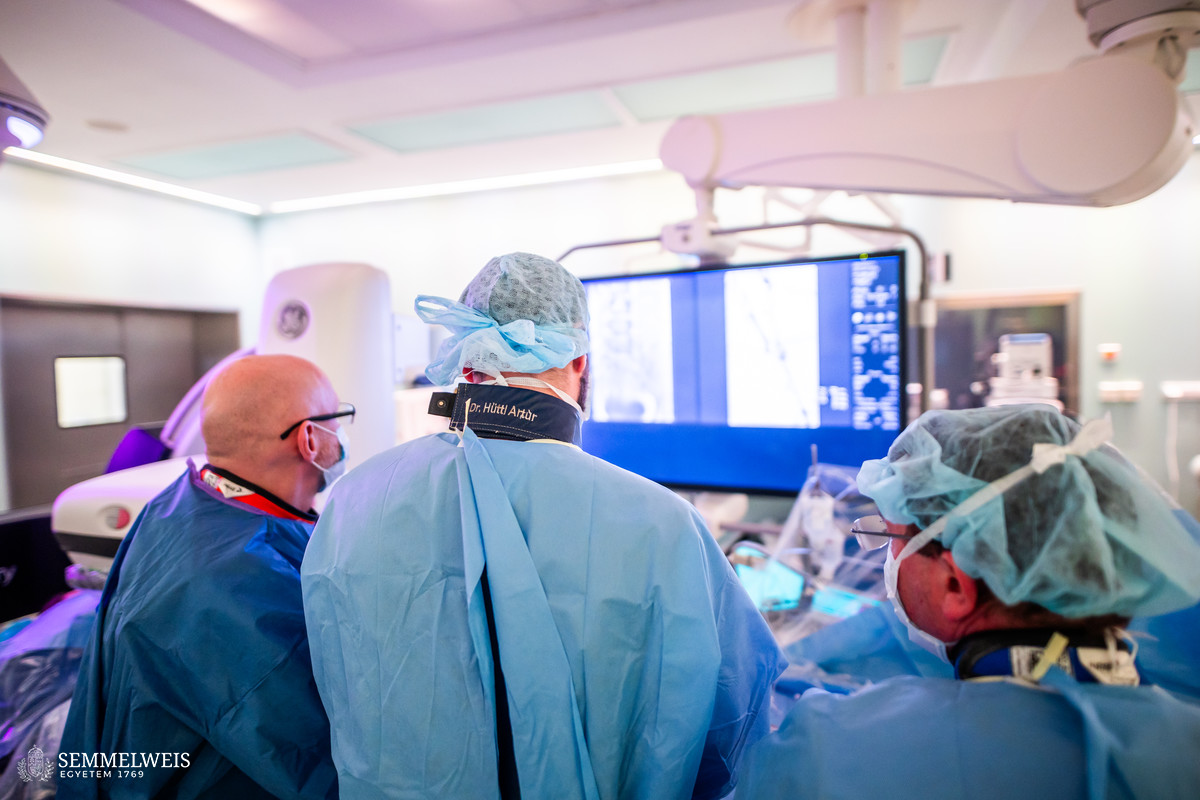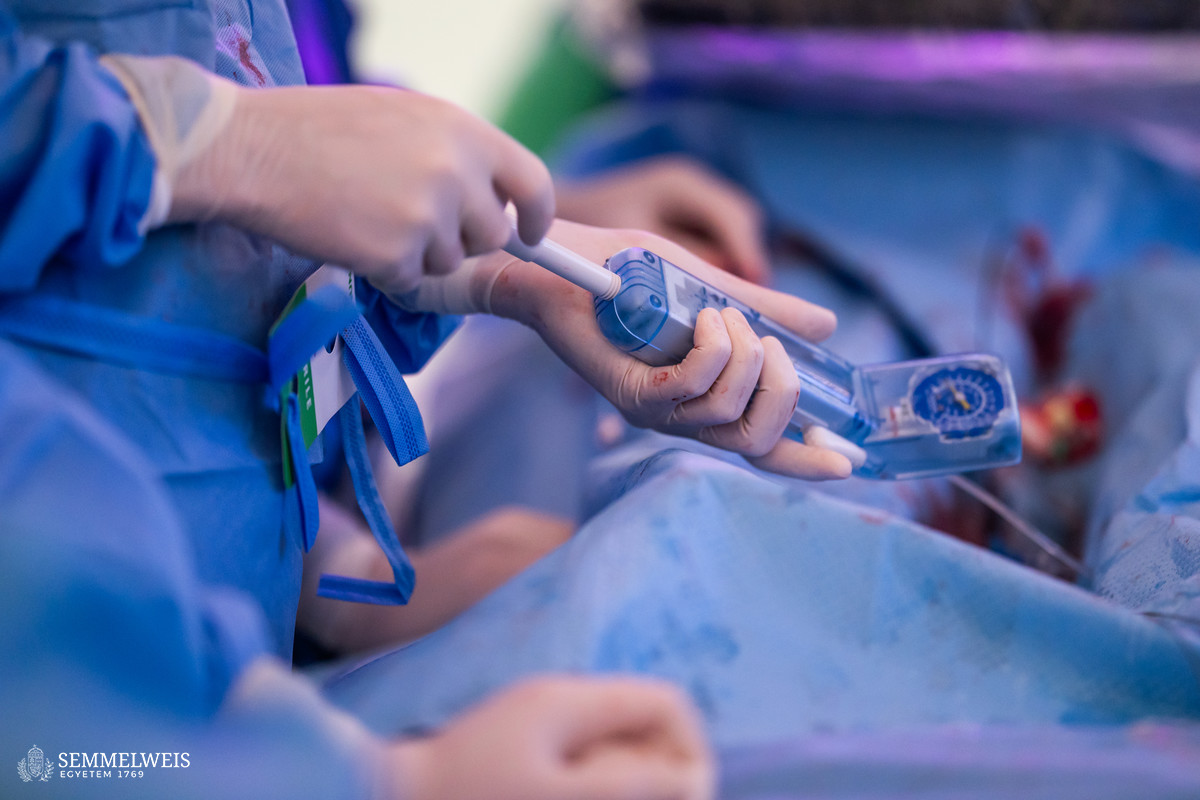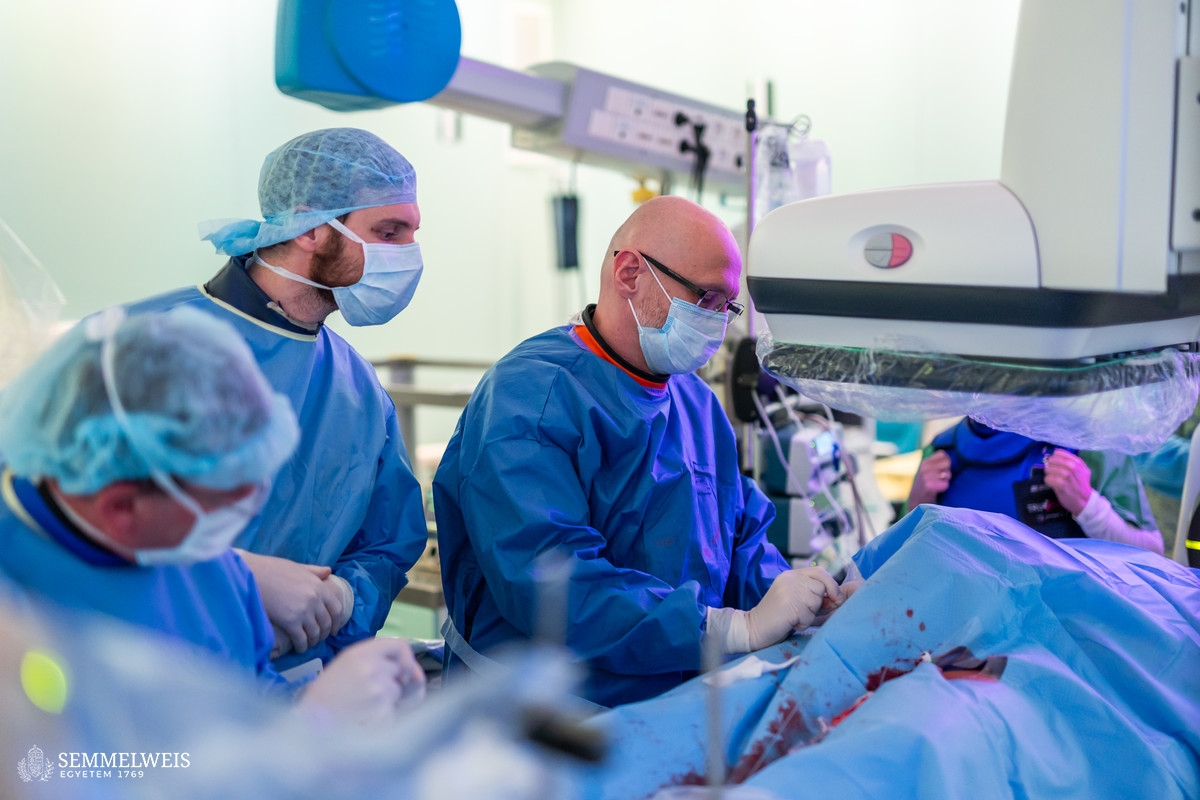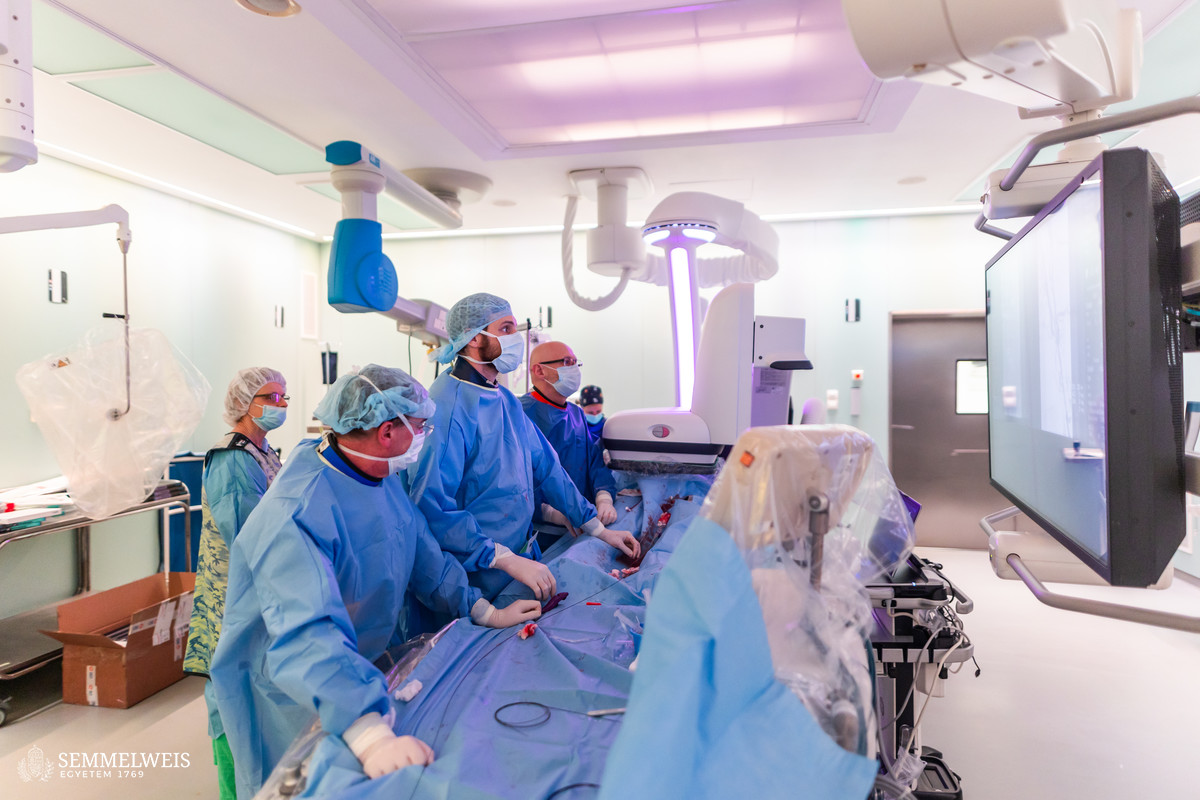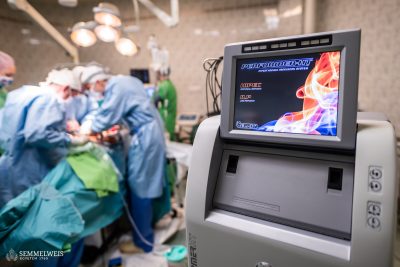Deep vein thrombosis is the third most common cardiovascular disease after ischaemic heart disease and stroke.
On average, it affects one in two thousand people, and is slightly more common in women. Typical treatment for deep vein thrombosis with blood thinning medication is effective in opening the veins in the majority of cases, but in 20-40% of patients this is not fully successful and blood flow obstructing lesions remain.
5-10 percent of these patients complain about symptoms that significantly impair the quality of life, explained Dr. Balázs Nemes, Head of the Department of Interventional Radiology at the Heart and Vascular Centre in Városmajor.
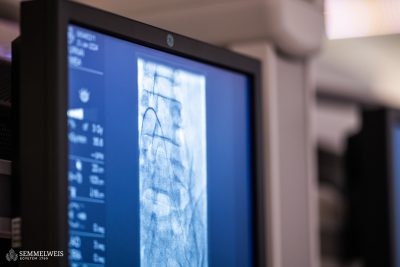 As a result of the chronic venous insufficiency, patients suffer from swelling and possibly ulceration of the legs, difficulty in walking and climbing stairs. In case the previous thrombosis damaged the large veins in the pelvis and abdomen, the risk of developing these symptoms is higher. “For those affected, the only real solution is to reopen the pelvic and abdominal veins with an intravenous catheter procedure. However, until recently, there was no optimal device, i.e. a stent (a device to help keep the vein open), for this purpose, so these interventions, even when performed, did not provide a permanent solution,” said Dr. Balázs Nemes.
As a result of the chronic venous insufficiency, patients suffer from swelling and possibly ulceration of the legs, difficulty in walking and climbing stairs. In case the previous thrombosis damaged the large veins in the pelvis and abdomen, the risk of developing these symptoms is higher. “For those affected, the only real solution is to reopen the pelvic and abdominal veins with an intravenous catheter procedure. However, until recently, there was no optimal device, i.e. a stent (a device to help keep the vein open), for this purpose, so these interventions, even when performed, did not provide a permanent solution,” said Dr. Balázs Nemes.

At the same time, the first such complex endovascular interventions using special venous stents were performed on five patients at the Heart and Vascular Centre in Városmajor last autumn and this January. Dr. Artúr Hüttl, a clinical specialist of the department, said that the first intervention was performed in the presence of an international expert in the field, Professor Nils Kucher, head of the Department of Angiology at the University Hospital of Zurich, who helped to introduce the procedure.
In such severe, chronic cases, for which endovascular intervention may be the solution, complex intervention is typically required, as there is a multi-level blockage involving long sections of the body, including the abdominal and pelvic veins.
The surgeries performed so far prove that here at the clinic we are able to treat even the most complex cases in this field in a unique way at the national level
– said Dr. Balázs Nemes.
Chronic deep vein thrombosis typically affects young people, as there is usually a genetic or autoimmune disease that predisposes them to it. The youngest patient in the surgeries so far was 20 years old, but the oldest was also in his mid-40s,” said Dr. Artur Hüttl. The symptoms can significantly impair the quality of life, even the ability to work,” he added, explaining the importance of the new surgical solution. The procedure can also open veins that have been blocked decades earlier, even in childhood, and thus restore the healthy functioning of the vascular system.
The intervention is financed by social security funding on a case-by-case basis. To whom the procedure is recommended, the severity of the complaints and the effectiveness of the standard conservative treatments (medication, bandaging) must be taken into account. Nevertheless, Dr. Balázs Nemes considers it of utmost importance that as many people as possible are aware of the possibility of this intervention, which now provides a more effective solution than ever before.
Pálma Dobozi
Translation: Viktória Kiss
Photo: Bálint Barta – Semmelweis University
